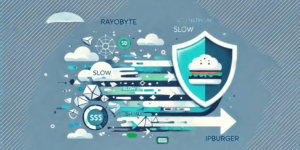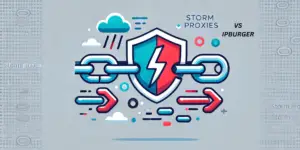If you’re wondering what MAP monitoring is, this article summarizes the basics and reveals how to safely automate the process.
When someone makes a product to sell, they must consider the manufacturing cost and set a price that generates revenue. Otherwise, they wouldn’t sustain themselves in the marketplace.
Sounds reasonable.
What happens if retailers begin to sell the product below the cost of manufacturing + sustainable revenue?
There are a few possibilities, but it generally depreciates the product’s value. Ultimately, it destabilizes the supply chain, leading to nasty fallout.
Manufacturers want to prevent this.
Retailers too.
Consumers – granted they care about quality products made from sustainable and ethical sources – should also want to avoid this end.
The line in the sand is drawn using a Minimum Advertised Price, delightfully acronymed as MAP.
This article first prepares you with some background on MAP and MAP monitoring and then pivots into how you can automate the monitoring part to keep up with rapid price fluctuations.
Menu
What is MAP?
As we already mentioned, MAP stands for Minimum Advertised Price. Retailers agree with manufacturers, brands, and suppliers on the minimum price they can sell goods and services.
Retailers sell their inventory for a higher price, adding convenience and customer service to the products and considering their cost to advertise, storing, warehousing, salaries, insurance, etc.
MAPs are beneficial to everyone if you look closely, and not just the manufacturers.
- Maintenance of fair competition across different channels
- Allow small and medium online stores to co-exist with bigger ones
- Maintain stable margins and prevents price erosion
- It helps preserve brand integrity
- Creates trust between retail partners
- Reduces terrible experiences for consumers
It’s not in any retailer’s best interest to sell their inventory lower than MAP, but the ebb and flow of demand can pressure store owners.
The pressure usually comes from reality not meeting expectations. In other words, the retailers fail to plan for market uncertainties and bite off more than they can chew.
In markets, we can mitigate the surprise of reality by monitoring its fluctuations as close to real-time as possible.
Why do eCommerce suppliers need MAP monitoring?
The importance of online price management is evident. It helps on all levels. However, being on top of your pricing isn’t just about revenue.
Price is a powerful marketing tool—it has an incredible effect on brand value. Prices are so diversified on different marketplaces and can negatively impact the consumer’s perception of that particular brand.
Consider a scenario where online shoppers expect to see the exact prices once your brand’s product has been listed at a lower price. They have an enormous memory correlating the costs with your brand.
When one retailer sets a low price, others risk following, lowering your brand’s prices to survive in the ultra-competitive e-commerce landscape.

This can create a dangerous domino effect.
After the enormous efforts to maintain a valuable brand reputation, the last thing you want is to get your brand harmed just because of not monitoring your brand’s prices in retailers’ stores. It may take tons of time and effort to retain your brand’s reputation back again.
How does MAP monitoring work?
Map monitoring is tracking price fluctuations across digital channels. But it’s not like you can grab a view screenshots and plug them into a spreadsheet. To monitor MAP effectively, you must continually monitor prices and remind resellers if they violate your terms.
Track everything.
Your MAP policy defines the minimum price your retailers can display. If you aren’t paying attention, some may ignore your policy. Once one seller starts to ignore your policy, others will have to follow suit to stay competitive.
Tracking prices is one of the most vital components of MAP monitoring. The more blind spots you have, the easier it is for sellers to get a leg up on the competition and claim the best price — it’s alluring.
It may be easy enough to keep track if you have only a few sellers. But as you take on more partners, keeping track of your prices is harder. Additionally, it becomes more likely that you’re products begin to appear in non-authorized stores.
You need to know whenever someone violates your policy–period.
The moment one seller goes rogue, a domino effect could destabilize your whole product positioning.
Monitor pricing constantly.
The closer to real-time your data flow, the better. This becomes problematic for manual methods of monitoring. You may only be able to check prices once or twice a day at best, enough to tip the first domino over any moment.
In other words, you’re leaving enormous opportunities for sellers to violate your price without you being aware.
You may want to believe everyone will respect your policy because it truly means long-term success and stability.
However, some will always see what they can get away with.

Automate the monitoring process.
There are numerous programs you can hire to automate price monitoring. Often, they capture prices by entering the websites and eCommerce pages that host your products. Some can even automate the process of recognizing MAP violations.
However, there is no one-size-fits-all MAP monitoring system, and you may have to piece together a comprehensive set of best tools.
The most crucial part is capturing prices wherever your products are sold. Using web scraping tools, you can harvest keywords and find brand mentions. This way, if a consumer can search for it, you will be aware of it.
Web scraping services exist everywhere today, and you can even do it yourself if you have a little technical knowledge. Otherwise, dozens of web scraping APIs are all-inclusive.
Rotating residential proxies is the final tool and the most non-negotiable when scraping prices. Websites are allergic to web scraping and tend to ban IPs associated with an automated activity. eCommerce platforms like Amazon are incredibly advanced in preventing price scraping.
By using rotating residential proxies, you can bypass sophisticated web scraping security and geo-restrictions. You can now collect data globally at scale and in real-time.
For more advice on web scraping, visit our blog. If you already have data collection tools and want to pair them with unstoppable residential IP rotation – contact the IPBurger team or see our product page.


